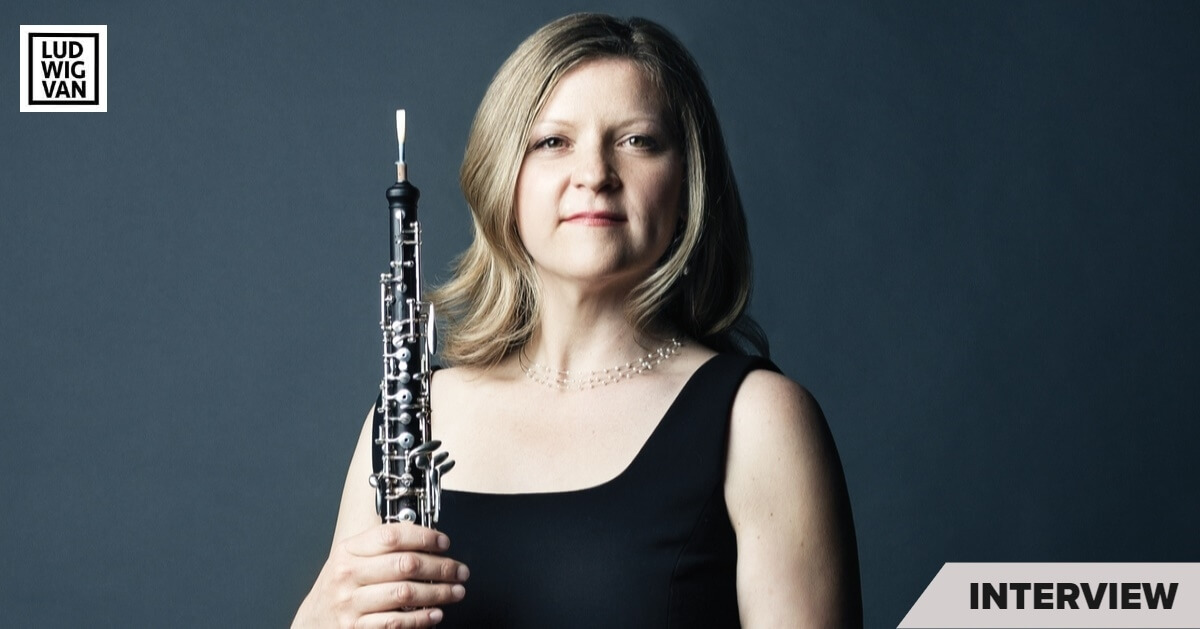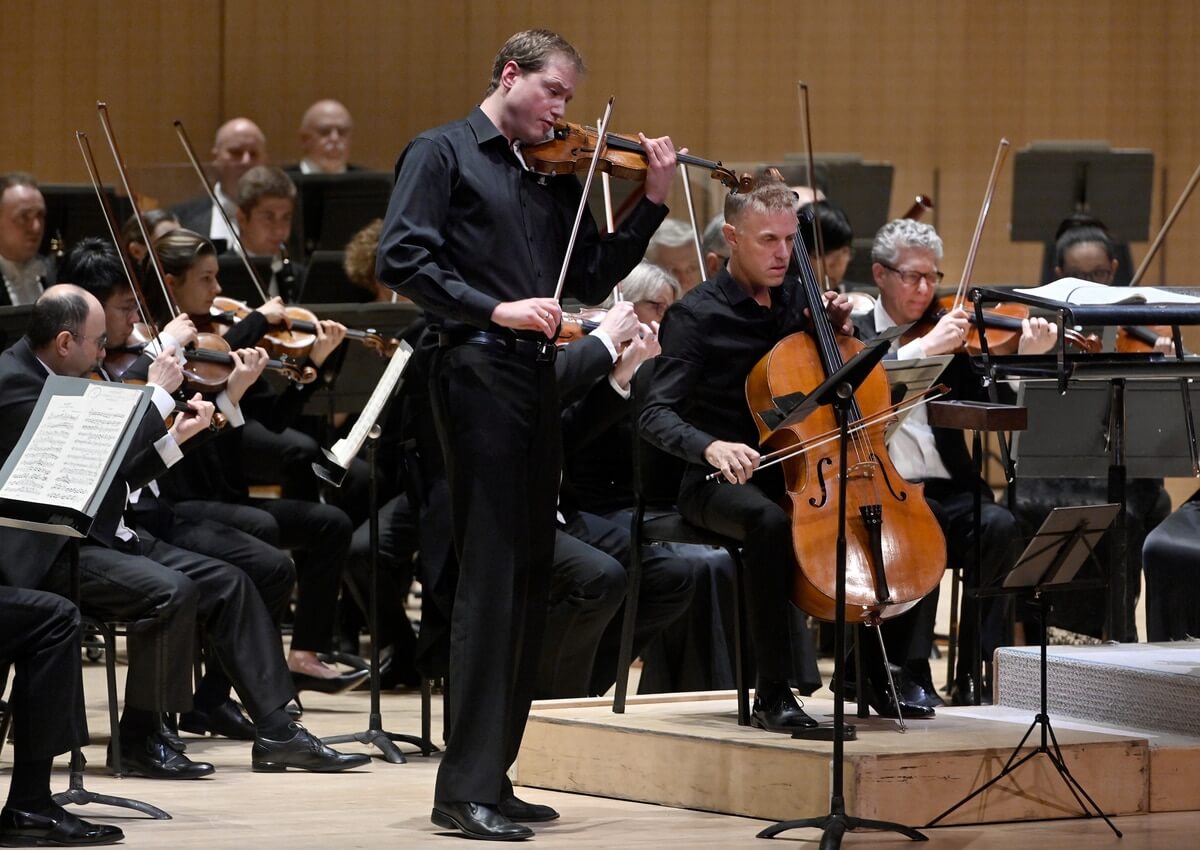Soloist Sarah Jeffrey talks about her upcoming concerts with the TSO playing the challenging Strauss Oboe Concerto

We talk of dreams and bucket lists, and seeing others achieving such goals can often make our own hearts resonate. This is one of the key traits that set us apart as fully sentient beings, and such pursuits invite us to experience, celebrate, and dream further. This week, the Toronto Symphony under the baton of Donald Runnicles, will support oboist Sarah Jeffrey as she tackles one of her dreams: to play the Strauss Oboe Concerto.
“It has been a lifelong goal to play the Strauss with any orchestra, but to play it with Canada’s best with one of the great Maestros of our time, will be a thrill beyond my wildest dream,” says Sarah. She grew up watching the TSO from the other side.
“I used to go to TSO concerts all the time. My favourite seats in the hall were in the choir loft, where I could hang over the rail and soak it all in. I listened to the sounds, the colours, and studied their every movement. I joined TSYO during my last year of High school at North Toronto Collegiate Institute. I couldn’t wait for Saturdays at 2 p.m., being inspired every week by all the coaches and conductors, making new friends, and playing some of the most beautiful repertoire ever written.”
The enthusiasm, love for art, discipline and support that Sarah experienced as a teenager at the Toronto Symphony Youth Orchestra made a great impact on her, as a musician and a teacher. “Now, as a member of the TSO, I know how valuable their time was, and realize how lucky we were to have these wonderful people and musicians committed to teaching the next generations of inspired musicians. It’s why I love teaching so much.”
Sitting with her former mentors who are now colleagues, including Joaquin Valdepeñas and Keith Atkinson, (David Zafer unfortunately passed away recently, in April 2019), Sarah is deeply appreciative of her TSO family.
“It is incredibly rare to win a job in your hometown orchestra, and I work incredibly hard every day to fill the Principal Oboe chair with the artistic standard that this orchestra deserves. I owe everything to the TSO, but maybe the most magical thing that happened to me in TSYO was meeting a handsome horn player named Gabe.” (Yes, Sarah is married to TSO horn Gabriel Radford).
But what’s it like to be in the front of your family, and take the spotlight?
Just a few month ago, in March 2019, The TSO won the 48th Juno: with Vaughan Williams: Orchestral Works (2018, Chandos), made from a live concert recording in November 2017. Being one of the featured soloists of the project, Sarah is proud and excited to be part of such excellent chemistry that is the TSO.
“It is equally exhilarating and daunting to stand up in front of the orchestra with a solo role. To know that you are representing your entire team, to play in a way that demonstrates our collective artistic merit. It is a big responsibility.
“But when you are up there, you feel lifted and supported, and everyone is cheering you on. It’s a great feeling. We have the best soloists in the world at the front of the stage every season, but I am never more proud than when it is one of us.
“Watching Andrew McCandless shimmer his way through Bramwell Tovey’s gorgeous trumpet concerto, or Joaquin’s incredible Copland concerto, Joe Johnson’s proud Schumann concerto, Heidi’s elegant harp concerto by Handel, and absolutely anything that Jonathan Crow has played, but his recent Sibelius concerto was outstanding.”

Jonathan Crow, the concertmaster of the TSO, shares her enthusiasm equally, and he is eager to start the week in her support:
“Supporting my colleagues — that’s my favourite thing to do. When you get someone like Sarah up there, it’s an immediate point of pride in people of our orchestra, that they can get up there and play a concerto. For her to move from doing this week’s Haydn symphony, then to prepare for the Strauss concerto at the same time — and to do that in a major international concert series, the Masterworks, for me, that’s what I love about my orchestra, that we have players that have the ability to get up there and perform at the international caliber. I have not played [the Strauss Oboe Concerto], and it doesn’t come up very often: I believe it’s unbelievably hard.”
The concerto itself, despite its obscurity, comes with an interesting origin. Strauss first met John de Lancie, an American oboist who was serving in the Army, near end of WWII. Through this chance meeting, Strauss and de Lancie became good friends, and one day, de Lancie asked if Strauss had ever thought about writing an oboe piece — and Strauss penned this concerto. However, despite Strauss’ wish for de Lancie to premiere it in America, as de Lancie was only a junior member of the Philadelphia Orchestra then, protocol made it impossible for him to premiere the work (the then-principal oboist of PO was the legendary Marcel Tabuteau) so de Lancie had to let Mitch Miller premiere it in America, and he did not get to play it until 1964.
The work is quite difficult — including pages heavily peppered with two Straussian cadenzas (translation: massive, difficult, beautiful and treacherous). Unlike a typical concerto, there is no clear break for the soloist, and readers may remember when it made the international news headlines a few years ago, when William Bennett collapsed during his concerto performance. But the concerto, despite its relentless demand on the soloist, physically and mentally, is full of beauty and elegance — so different from Strauss’ early works, such as Death and Transfiguration (the last work of the program).
“It is full of long melodies that seem never ending, with twists and turns and surprising shifts,” Sarah says. “I love the operatic drama in the cadenza after the second movement and the perky introduction to the last movement. The orchestration is stunning and rich, with solos everywhere, especially in the viola, flute, English horn, and clarinet and thankfully, it tends to feel more like a big chamber piece rather than a concerto.”
And yes, there is a definite public support for a non-standard concerto instrument being featured in the spotlight.
“The Strauss Oboe Concerto is what is making me interested to go. It’s not every day that you get to hear an oboe concerto,” says student Rae Pauze.
“It seems to me that violin, cello and piano are the most frequently programmed concertos,” notes musician Heather Macdonald. “Personally, I’d love to hear more wind concertos as part of an orchestra’s regular programming.”
Jonathan Crow weighs in on programming choices. “It’s always hard to find that mix between programming something popular, and something that is amazing and important. Finding things off the beaten track is important to do, and making sure that there are some standards for the people that have never gone to the symphony before, this is the hardest thing about putting together an entire season, to find that balance.
“The repertoire that people love so much, like the Mendelssohn Violin Concerto…after all, at some point, that Mendelssohn concerto was new and fresh, like anything else, and it’s a standard piece now, only because it is so incredible. We have to give same kind of consideration to other pieces, so that they get the chance to be heard, and perhaps in a hundred years, Strauss concerto could be as popular as the Mendelssohn violin concerto. But, if you don’t program it, it never will be.”
Rarely performed amazing late Strauss composition. Beautiful soloist. Tight-as-family support from the ensemble. One of the best conductors in the world today: Donald Runnicles. The equations are looking mighty fine. Get your device out and book a seat for the Romantic Brahms, and join the family. It’s not every day that we get to see our own shine on that stage.
TSO present: Romantic Brahms, 27/28/29 September 2019, at the Roy Thomson Hall, Toronto. Details here.
#LUDWIGVAN
Want more updates on classical music and opera news and reviews? Follow us on Facebook, Instagram or Twitter for all the latest.
- CRITIC’S PICKS | Classical Music Events You Absolutely Need To See This Week: April 22 – April 28 - April 22, 2024
- CRITIC’S PICKS | Classical Music Events You Absolutely Need To See This Week: April 15 – April 21 - April 15, 2024
- SCRUTINY | Laurie Anderson Entrances A Sold-Out Koerner Hall With A Journey Down The Rabbit Hole - April 8, 2024



